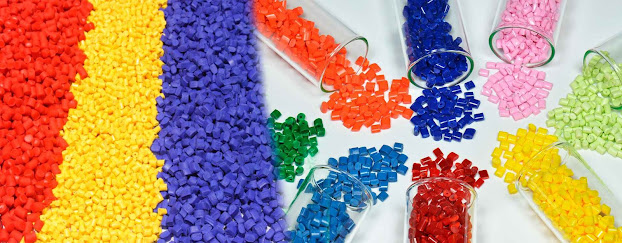The Critical Role of Chemicals in Rubber Processing: Enhancing Quality and Performance
 |
| Rubber Processing Chemicals |
The rubber industry relies heavily on chemicals to process natural and synthetic rubber into various usable forms. From latex to finished tires and other rubber goods, chemicals play a crucial role at every stage of rubber manufacturing and compounding. Some of the main types of rubber processing chemicals used include:
Accelerators and Vulcanizing Agents
One of the most important processes in rubber manufacturing is vulcanization -
the chemical process that converts raw, stretchy rubber into a strong, durable
material through the addition of sulfur or other curatives. Accelerators are
chemicals added to control and speed up the rate of vulcanization. Common
accelerators include mercaptobenzothiazole, sulfenamide and guanidine
compounds.
Vulcanizing agents like sulfur provide the reactivity necessary for
vulcanization to occur by forming cross-links between polymer chains. Other
vulcanizing agents beyond sulfur include organic peroxides and resin systems.
Proper application of accelerators and vulcanizing agents is crucial for
optimizing the physical properties of the finished vulcanized rubber product.
Antidegradents
Rubber undergoes degradation when exposed to factors like heat, oxygen and
ozone over time. Antidegradents are chemicals that protect Rubber
Processing Chemicals from deterioration. Common types include
anti-oxidants that inhibit oxidation and prevent premature aging, and
anti-ozonants that protect rubber from being brittle or cracked by ozone. Often
a combination of antioxidants and anti-ozonants will be used in rubber
formulations for maximum protection against environmental factors.
Adhesion Promoters
Adhesion promoters enhance the bonding between rubber and various fillers or
compounding ingredients used like carbon black, silica and fibers. They work by
penetrating filler surfaces and promoting strong molecular interactions.
Typical adhesion promoters are organic compounds with reactive functional
groups like silanes, amines and carboxylic acids. Improving adhesion is crucial
for reinforcing fillers to impart strength and other property enhancements to
the finished rubber articles.
Softeners and Plasticizers
Some rubber products require more flexibility or softness for specific
applications. Softeners and plasticizers are used to impart suppleness and ease
processing. Common types include mineral oils, phthalate esters and polymeric
plasticizers. They function by penetrating the rubber matrix, increasing the
distance between polymer chains and reducing intermolecular forces to impart
greater flexibility and softness. Controlling plasticizer levels is critical
for balancing properties.
Retarders
During rubber processing and storage, it is undesirable for vulcanization to
proceed prematurely. Retarders are chemicals that inhibit or slow down the
vulcanization reaction. Typical retarders used are quinoline derivatives,
imidazoline derivatives and organic acids. They can be used during storage and
shipping of unvulcanized rubber compounds to improve processing stability and
shelf-life.
Other Processing Aids
Other chemicals have more specialized functions in rubber manufacturing. For
instance, blowing agents generate inert gas bubbles and cell structures to
manufacture foamed rubber products. Tackifiers temporarily increase tack or
stickiness during calendaring and other handling processes. Antistatic agents
prevent buildup of static electricity. And conditioners improve the handle and
feel of rubber surfaces. Carefully formulated rubber chemical systems precisely
tailor the properties of processed rubber materials for varied applications.
Rubber Chemical Manufacturing Processes
Rubber chemicals are produced through a series of unit operations depending on
the class and complexity of the chemical. Overall, processes involve reacting
starting materials, purifying and crystallizing or distilling the product, and
testing to ensure specifications are met. Here are snapshots of processes for
two common rubber chemical types:
Vulcanization Accelerators:
Sulfur-containing organic compounds like mercaptobenzothiazoles are made
through multi-step synthesis reactions at controlled temperatures. The crude
product is purified by crystallization followed by filtration. Accelerator
particles are milled to specific size distributions. Strict quality control
testing verifies properties like chemical purity, particle size and melting
point.
Antioxidants: Amination processes
create amine classes of antioxidants from starting aromatic nitro compounds.
Excess reactants are removed through distillation. Higher molecular weight
polymeric antioxidants may undergo auto-oxidation polymerization reactions.
Final products are refined, typically through re-crystallization from solvents.
Analytic techniques like chromatography precisely measure antioxidant levels
and ensure consistency between batches.
Global Rubber Chemical Dynamics
The global rubber processing chemicals stands at USD 5.6 billion as of 2019 and
is expected to grow at 4-5% per year through 2027. Demand trends are dependent
on sales of tires and various rubber goods across major industries:
- Tire manufacturing consumes over 60% of total rubber chemicals produced
worldwide. Increasing vehicle ownership and mileage driven supports steady tire
expansion.
- growth in industrial rubber applications like conveyor belts, hoses, gaskets
and seals sustains usage of compounds and polymers.
- Recent emphasis on eco-friendly green tires is elevating demand for silane
coupling agents and other silica-reinforcing additives.
- Expanding applications of rubber in machinery, construction and other sectors
provides new opportunities for specialty rubber chemical formulations.
- Regulatory shifts to reduce certain phthalate plasticizers usage may open
niches for alternative plasticizing agents.
- Emerging markets like China, India, Southeast Asia continue to contribute
significant rubber and chemicals demand growth.
As rubber and tire industries increasingly adopt advanced technologies,
innovative high-performance rubber chemical solutions capturing niche
application segments will drive future potential. Overall rubber chemical
consumption trends closely mirror rubber industry dynamics across major
manufacturing geographies worldwide.
Rubber processing chemicals serve vital enabling functions throughout natural
and synthetic rubber production and compounding. From vulcanization to property
enhancements and environmental protection, carefully engineered chemical
systems allow the versatile rubber material to be made into critical components
for transportation, infrastructure and diverse industrial applications counted
on worldwide. Demand for high quality rubber chemicals is firmly entrenched
alongside the solid long-term outlook of the global tire and rubber industry
landscape.
Get more insights on Rubber Processing Chemicals



Comments
Post a Comment